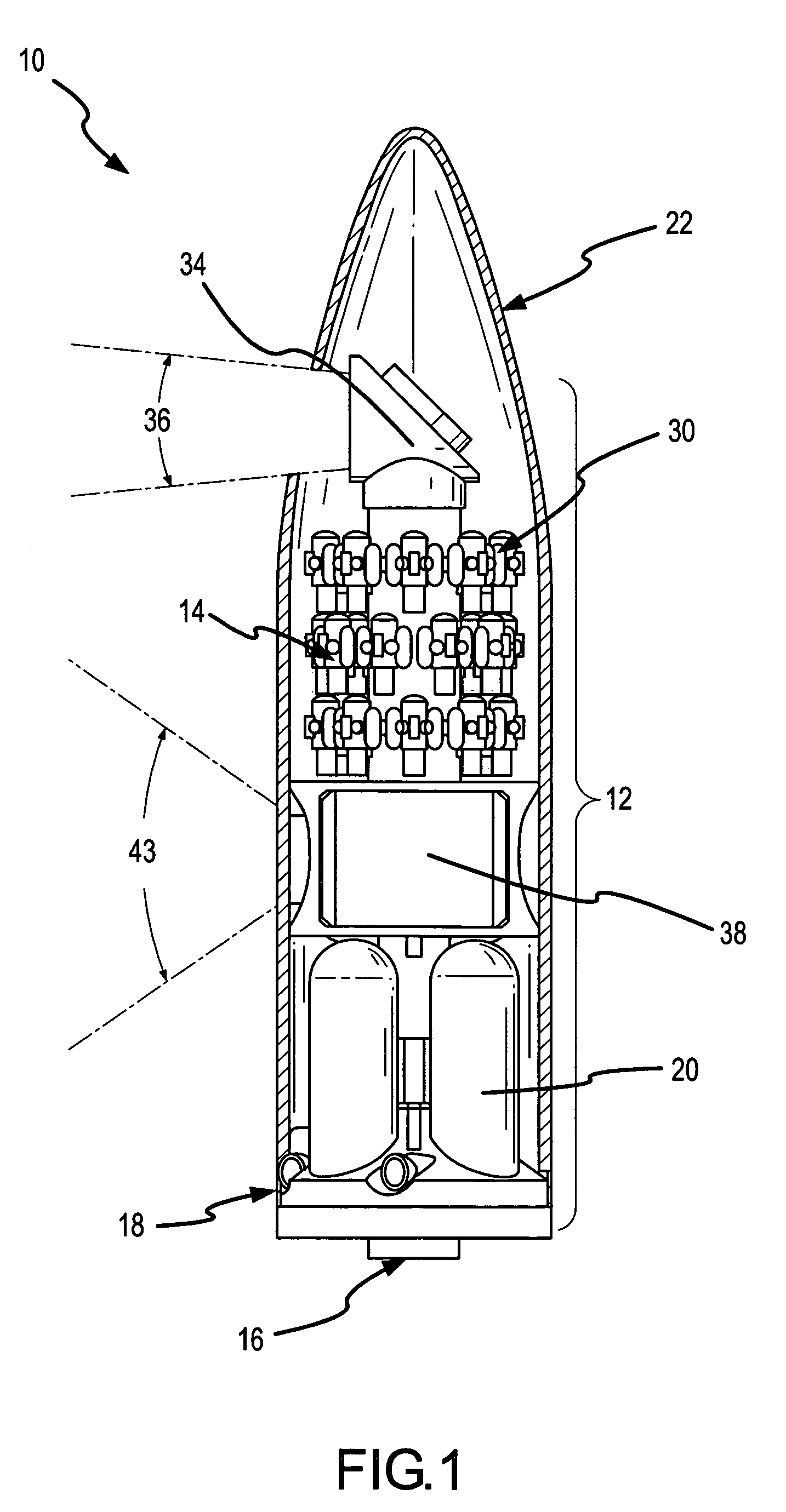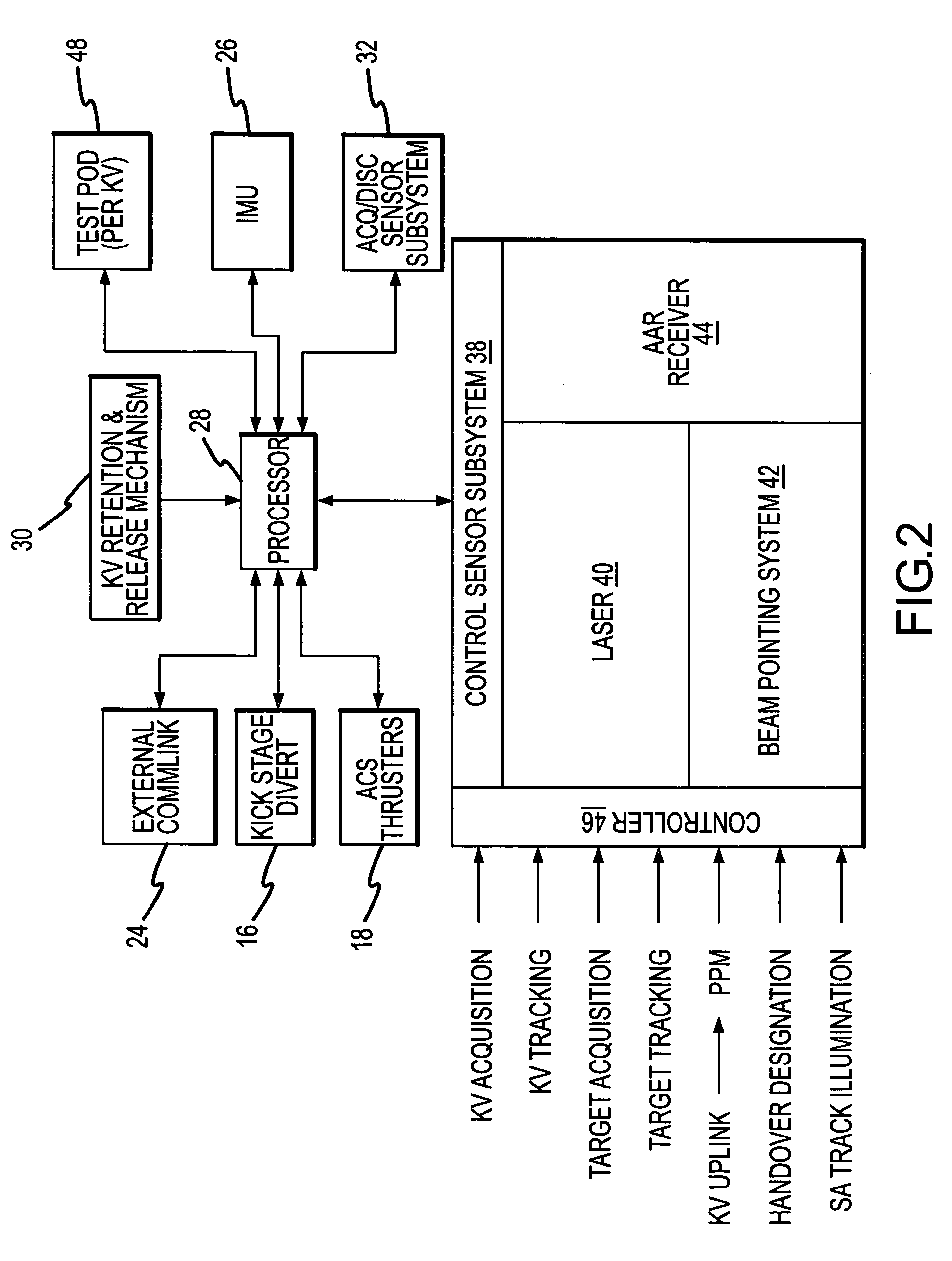Multiple kill vehicle (MKV) interceptor and method for intercepting exo and endo-atmospheric targets
a multi-kill vehicle and target technology, applied in the field of missile defense systems, can solve the problem that the short-band imaging sensor cannot adequately detect passive signatures
- Summary
- Abstract
- Description
- Claims
- Application Information
AI Technical Summary
Benefits of technology
Problems solved by technology
Method used
Image
Examples
Embodiment Construction
[0031]The present invention describes a multiple kill vehicle (MKV) interceptor for intercepting targets. The particular MKV interceptor described herein is for exo-atmospheric interceptors. Atmospheric drag requires different CV and KV designs although the principles are applicable.
[0032]As an overview, the presence of an incoming target is detected and signaled to the battlefield management system by an early warning system and an MKV interceptor is launched on a path to intercept the target. At a certain range to the target cloud, the CV releases the KVs and preferably deploys them in waves out in front of the CV. An exemplary CV includes a LWIR discrimination and acquisition sensor subsystem for passively acquiring and discriminating real targets based on external cues and refining the track and a short-band control sensor subsystem for actively tracking the targets and KVs and command guiding the KVs pre-handover. The CV suitably hands over the target designation and tracking i...
PUM
 Login to View More
Login to View More Abstract
Description
Claims
Application Information
 Login to View More
Login to View More - R&D
- Intellectual Property
- Life Sciences
- Materials
- Tech Scout
- Unparalleled Data Quality
- Higher Quality Content
- 60% Fewer Hallucinations
Browse by: Latest US Patents, China's latest patents, Technical Efficacy Thesaurus, Application Domain, Technology Topic, Popular Technical Reports.
© 2025 PatSnap. All rights reserved.Legal|Privacy policy|Modern Slavery Act Transparency Statement|Sitemap|About US| Contact US: help@patsnap.com



